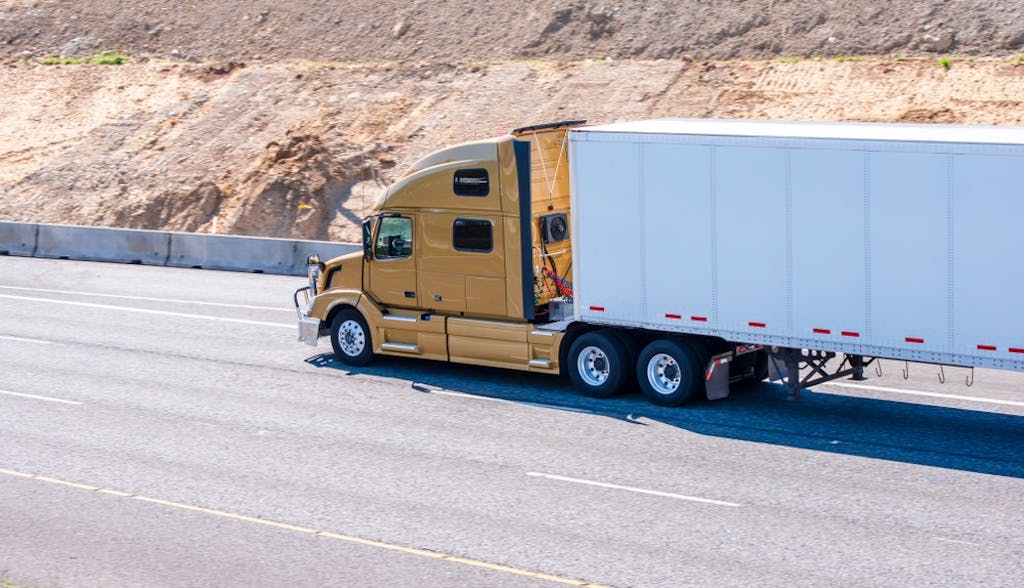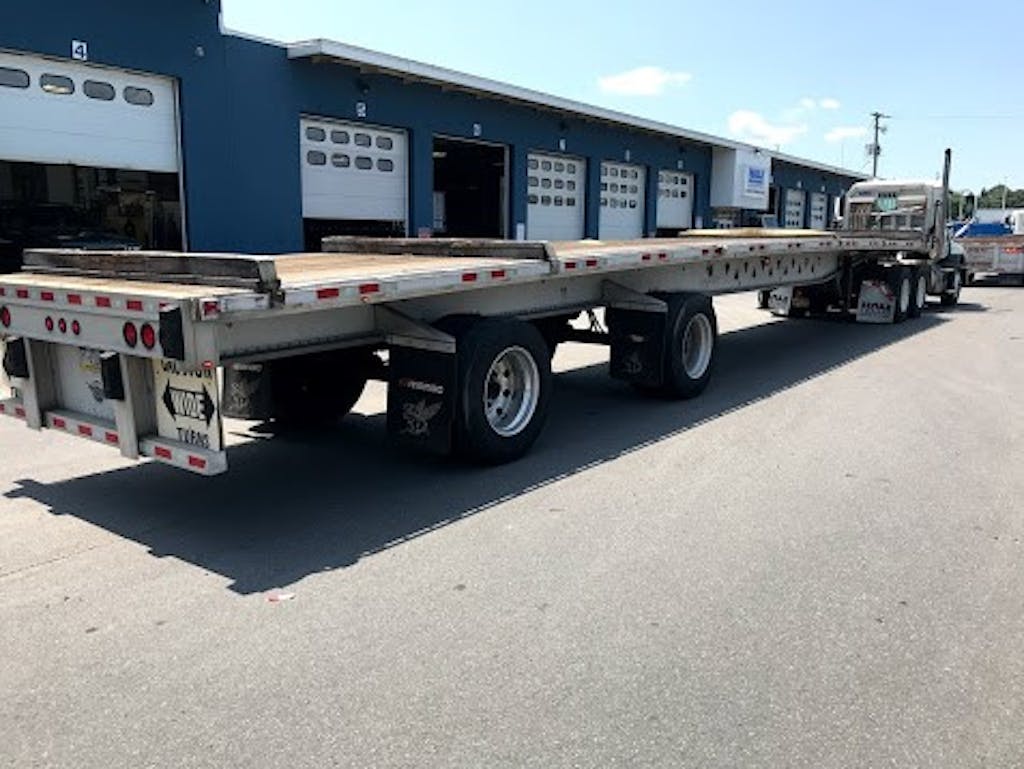Dry Van vs. Flatbed: How to Choose the Best Trailer for the Job
September 16th, 2019
Those who transport freight for business know that there’s plenty of choices when it comes to the trailer you use for the job. Out of all the commercial trailers you see on the road, two models are by far the most common: dry vans and flatbeds.
There are many reasons why these two trailers are so popular, which forces owner-operators and fleet managers to weigh the pros and cons associated with each. Which is best for your specific needs all comes down to the requirements of the job: Do you need temperature regulation? The ability to load from the top? An extended platform?
If you’re not sure how to decide between buying a semi-trailer vs a dry van or flatbed trailer rental, this post will go over the many different considerations you should contemplate before selecting a commercial trailer rental. After this read, you’ll feel confident that you’re making the best decision for your unique business needs.
Dry Van vs. Flatbed: What’s the Difference?
Dry van trailers are the most common types of trailers in the freight transportation industry. These trailers are enclosed and protected from the elements, making them the perfect option for transporting valuable or sensitive cargo.
Flatbed trailers are widely used due to their versatility and ability to haul oversized cargo. With no enclosure, flatbeds can be loaded from the sides or from above, making them the best option for transporting vehicles, construction equipment, and other heavy materials.
Let’s look further into the dimensions and specifications of these trailers before discussing the pros and cons of each.
Dry Van Dimensions and Specs
A dry van trailer (also known as a box trailer) is an enclosed trailer that’s used to haul freight typically behind a semi-truck. The standard dimensions of a dry van’s cargo unit are 53 feet long by 8.5 feet (102 inches) wide. The external height is approximately 13’ 6” high while the interior height clocks in around 110”.
That being, there are many different types of dry vans you can choose between depending on what you need to ship, how far, under what control, and at what rate.

Different Types of Dry Vans
- Sheet and Post Dry Vans
- Plate Dry Vans
- Custom Spec Dry Vans
If you need a dry van for rent, contact one of our representatives at your nearest Hale Trailer location to learn more about the different compositions as well as our custom models than can solve your shipping needs.
Different Types of Dry Van Suspensions
Suspension type varies by dry van model, but most manufacturers use either air slide or spring systems.
Different Dry Van Manufacturers
We carry dry vans from some of the top manufacturers in the industry, including:
- Hyundai
- Great Dane
- Utility
- Wabash
- Dorsey
- Strick
- Fruehauf
- Vanco
Flatbed Dimensions and Specs
Compared to a dry van, a flatbed trailer is designed without walls or a ceiling. Because it has no top and no sides, it allows truckers to load from a variety of angles and facilitates the shipment of large machinery that wouldn’t fit in a concealed container.
In terms of flatbed vs. dry van dimensions, these trailers run a bit shorter at a standard 48 foot length, although the width is approximately the same at 102 inches. However, similar to dry vans, there are a number of different models that can accommodate your needs for larger cargo space or increased freight capacity.
The legal dimensions for a flatbed trailer usually vary by model. For example, a double drop flatbed has a lower deck height that allows truckers to haul products taller than 10 feet, whereas extendable flatbeds can reach up to 80 feet in length.

Different Types of Flatbed Composition
Generally speaking, the stronger the trailer, the more weight it can haul. Speak to an experienced team member at one of our locations who can help you find the exact flatbed trailer rental for your specific freight.
Different Types of Flatbed Suspensions
Flatbed trailers are manufactured with one of numerous suspension options, including:
- Air ride
- Air ride spread
- Air tri axle
- Rear axle slide suspension
Different Flatbed Manufacturers
You’ll find flatbeds from industry-leading manufacturers at any of our trailer rental locations, including:
- Dorsey
- Fontaine
- Manac
- East
Dry Van vs. Flatbed: Pros and Cons
Now that you know how these trailers operate, let’s take a look at a side-by-side comparison of a dry van and flatbed trailer to determine which is better for your job at hand.
Dry Van Advantages
- The enclosed trailer protects freight against theft and adverse elements on the road.
- Dry vans excel in shipping a variety of commercial goods, which is why they’re very popular within the food and beverage industry. The most popular freight items include non-perishable foods and beverages, clothing and textile products, as well as plastic and construction items.
- The trailer can be easily backed up to a loading dock where the dock is typically the same height as the trailer floor. This is beneficial because it simplifies the loading and unloading process with the effortless use of a pallet jack or forklift.
- If your business needs to ship to a location without a loading dock, a forklift can still be used to unload the pallets by raising to the height of the trailer floor.
- Some dry vans may come equipped with a lift gate that can be lowered to the ground on a motorized deck, eliminating the need for a loading dock or forklift altogether.
Dry Van Disadvantages
- Compared to reefer trailers, dry vans do not offer temperature control.
- Dry van floors may be vulnerable to moisture depending on their composition, which is mainly wood.
- Dry vans can only be loaded and unloaded from the rear.
Flatbed Advantages
- Compared to dry vans, flatbeds typically have a larger maximum hauling capacity due to their option for an extended length or deeper well.
- Flatbeds can haul oversized loads. Items that are too big to fit inside a dry van trailer, such as big machinery equipment, can be loaded onto a flatbed for transport.
- Flatbeds are more versatile because freight can be loaded from the rear, the side, or the top via crane.
Flatbed Disadvantages
- Flatbed freight is exposed to weather elements and abrasion on the road and is also at risk of theft or tampering mid-transit.
- Drivers are required to secure loads property to ensure the safety of the cargo, which also intensifies the risk potential of damaged goods during shipment.
- Special driving and hauling skills are required to maneuver flatbeds, especially if the load is oversized and the weather is poor.
Dry Van vs. Flatbed: Which is Better?
At the end of the day, choosing between a dry van vs. flatbed boils down to what freight you’re hauling and how skilled your driver is. If you need to protect your cargo from wind, rain, dust, or anything else it might be exposed to during shipment, you should probably go for an enclosed dry van. If you’re hauling an oversized load with extra-large dimensions, flatbed trailers are the appropriate choice.
For more information on commercial trailers and which one is the right fit for your business need, contact one of our 12 locations to learn more about our available lineup and answer any additional questions you may have.
All the information on this website – https://www.haletrailer.com – is published in good faith and for general information purposes only. Hale Trailer Brake and Wheel does not make any warranties about the completeness, reliability and accuracy of this information. Any action you take upon the information you find on this website, is strictly at your own risk. Hale Trailer Brake and Wheel will not be liable for any losses and/or damages in connection with the use of our website.
